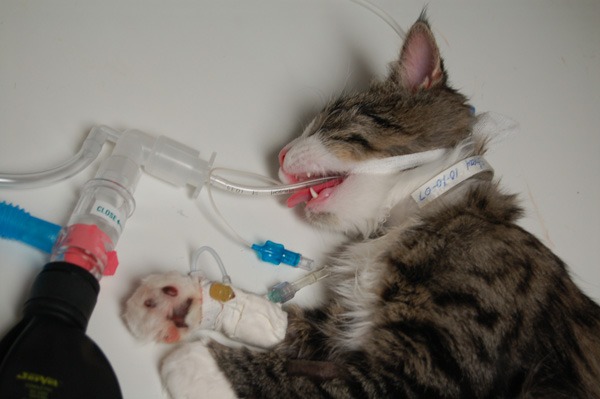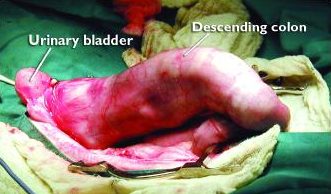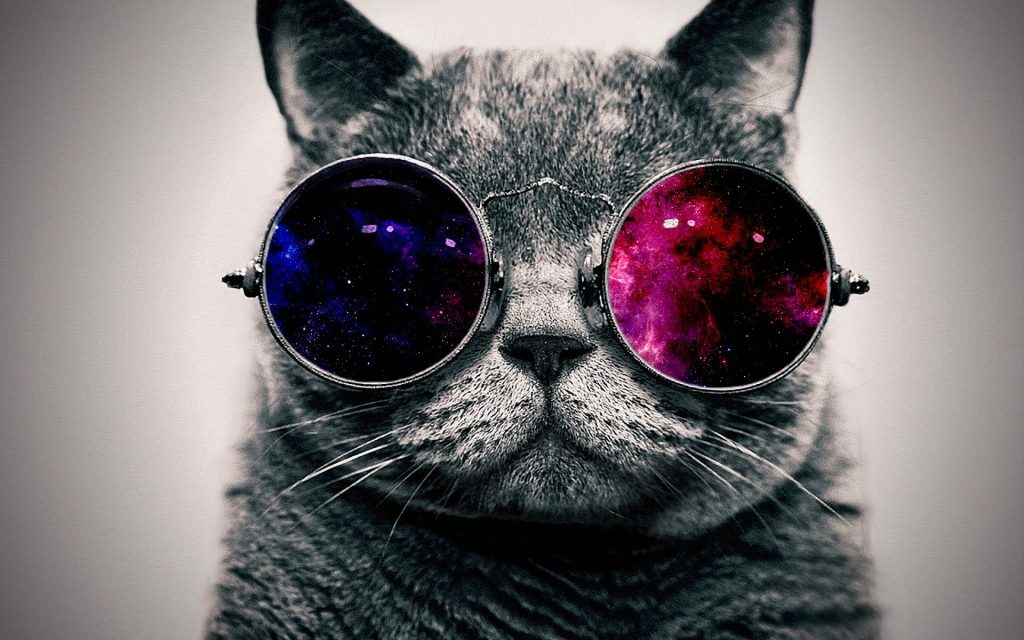Last week I introduced you to a debilitating colon problem in cats called megacolon. This disease causes marked dilation of the colon with subsequent impaction with a large volume of feces. In this week’s post, I review how we treat this painful condition to make our affected feline friends feel better. Happy reading!
Megacolon – Medical Management
A single bout of constipation typically resolves without therapy. Mild-to-moderate or recurrent episodes of usually require some form of medical intervention. Such therapies may include:
- Dietary modification
- Laxatives
- Enemas
- Colon pro-motility drugs
Hospitalization for intravenous fluid therapy to correct dehydration and electrolyte derangements, as well as to evacuate impacted feces, is typically required for cases of obstipation and megacolon.
A veterinarian may recommend the use of rectal suppositories to manage mild constipation. Several types of suppositories are available, including glycerin, dioctyl sodium sulfosuccinate/Colace™, and bisacodyl/Dulcolax™. Effective use understandably requires a cooperative pet and compliant pet parent. Suppositories may be used alone or in conjunction with oral laxatives. Mild-to-moderate or recurrent episodes of constipation requires administration of enemas and possibly manual extraction of impacted feces (called deobstipation). There are several types of enema solutions for use by a veterinarian. Enemas with sodium phosphate should never be used.
Veterinarians will need to manually extract impacted feces from patients in which enemas and laxative therapy are not successful in facilitating defecation. This procedure should be performed under anesthesia, and a cat’s airway should be protected with the use of an endotracheal tube. Airway protection is essential to prevent aspiration in case colonic manipulation induces vomiting.

Veterinarians should administer an antibiotic like metronidazole/Flagyl™ because colon bacteria can gain access to the bloodstream during digital extraction. Doctors will usually infuse a mixture of warm water mixed and a water-based surgical lubricant into the colon to help passage of feces. Laxatives and/or pro-motility drugs can be used once feces has been adequately removed.
Laxatives:
There are several types of laxatives:
- Hyperosmotic type: Lactulose, a hyperosmotic laxative, is the most frequently used laxative in treating megacolon. This drug stimulates the colon to secrete fluid and move properly.
- Bulk-forming type: Fiber, psyllium, and canned pumpkin are common bulk-forming laxatives. Laxatives containing fiber may be particularly helpful because they induce vigorous colonic contraction by initially stretching the colon. Fiber supplementation may be effective in the early stages of disease when the colon still has some ability to Use of fiber in late stages of megacolon can exacerbate colonic distention and promote clinical signs. For these patients, a low residue diet is preferred.
- Emollient type: Emollient laxatives dioctyl sodium sulfosuccinate/Colace™ and dioctyl calcium sulfosuccinate/Surfax™ enhance fat absorption and impair water absorption in the colon. Animals should be well hydrated before receiving bulk-forming, hyperosmotic, and/or emollient
- Lubricant type: Lubricant laxatives impede colonic water absorption while facilitating ease of defecation and are typically beneficial with mild cases of constipation. White petrolatum and mineral oil are the most common examples of lubricant laxatives. Oral administration of mineral oil is not recommended because of the risk for aspiration.
- Stimulant type: Bisacodyl/Dulcolax™ is a laxative that stimulates colonic propulsive motility. This stimulant laxative may be given individually or in combination with fiber supplementation. Daily administration should be avoided because of potential injury to nerves cells in the colon.
Pro-Motility Drugs:
Veterinarians may prescribe drugs that try to trigger colonic contraction. Perhaps the most commonly prescribed drug of this nature is cisapride/Propulsid™. This medication has been shown to stimulate feline colonic smooth muscle receptors to promote proper motility. Unfortunately, this medication causes some abnormal and potentially fatal heart rhythms in people, and thus isn’t readily available commercial. Some veterinary compounding pharmacies are still able to formulate compounds for cats. In a previous discussion, I reviewed the importance of partnering only with compounding pharmacies that are accredited by the Pharmacy Compounding Accreditation Board (PCAB).
Other pro-motility drugs that may be helpful are:
- Antihistamines: Some antihistamine medications, including ranitidine/Zantac™and nizatidine/Axid™, stimulate colonic contraction in cats in laboratory settings, and may be helpful clinically.
- Tegaserod (Zelnorm,): This drug has definite pro-motile effects in the dog colon, but effects of tegaserod in the cat colon have not been reported. The drug was removed from the US market in 2007 because of abnormal heart rhythms in humans; it may still be available through some PCAB-accredited compounding pharmacies.
- Prucalopride/Resolor™: This drug stimulates contractions in dogs, frequently causing defecation within the first hour after administration. It also increases defecation within a similar period in healthy cats with no alteration of fecal consistency. In an agreement with Janssen Pharmaceutica N.V., Shire Pharmaceutical Ireland Ltd acquired the rights to market Resolor™ in the United States in 2012, but it is not yet available in the USA.
Megacolon – Surgical Management
Cats with chronic constipation that is refractory to appropriate medical therapies require surgical intervention. Many surgical techniques for the management of feline megacolon have been described. The current gold-standard surgical therapy is a procedure called a subtotal colectomy. This procedure involves removal of 90-95% of the colon. The use of enemas before colon surgery is not recommended because they change firm, dry feces into a bacteria-rich liquid capable of contaminating the surgical field. Patients are often fed a low-residue diet until 12 hours before general anesthesia, at which time food should be withheld. Free access to water should be allowed until anesthetic induction. Perioperative, broad-spectrum antibiotic therapy is recommended to reduce the risk for postoperative infection.

Potential postoperative complications include colonic leakage, incisional breakdown (called dehiscence), inflammation, infection, colonic stricture, and abscess formation. Patients are hospitalized for 1-3 days post-operatively to receive intravenous fluids to maintain proper hydration. They also receive appropriate pain medications to ensure they are as comfortable as possible. Once a patient has fully recovered from anesthesia, they may begin to eat and drink. Many patients benefit from anti-nausea and appetite stimulating medications. The long-term prognosis for cats with megacolon that undergo subtotal colectomy is fair to good.
The take-away message about treatment of megacolon in cats…
Feline megacolon is a relatively common disease characterized by generalized colonic dysfunction. Medical management with dietary modification and administration of laxatives, enemas, and/or pro-motility agents may often successful. However, subtotal colectomy should be considered for patients that are refractory to medical therapy.
To find a board-certified veterinary internal medicine specialist, please visit the American College of Veterinary Internal Medicine.
To find a board-certified veterinary surgeon, please visit the American College of Veterinary Surgeons.
Wishing you wet-nosed kisses,
cgb







